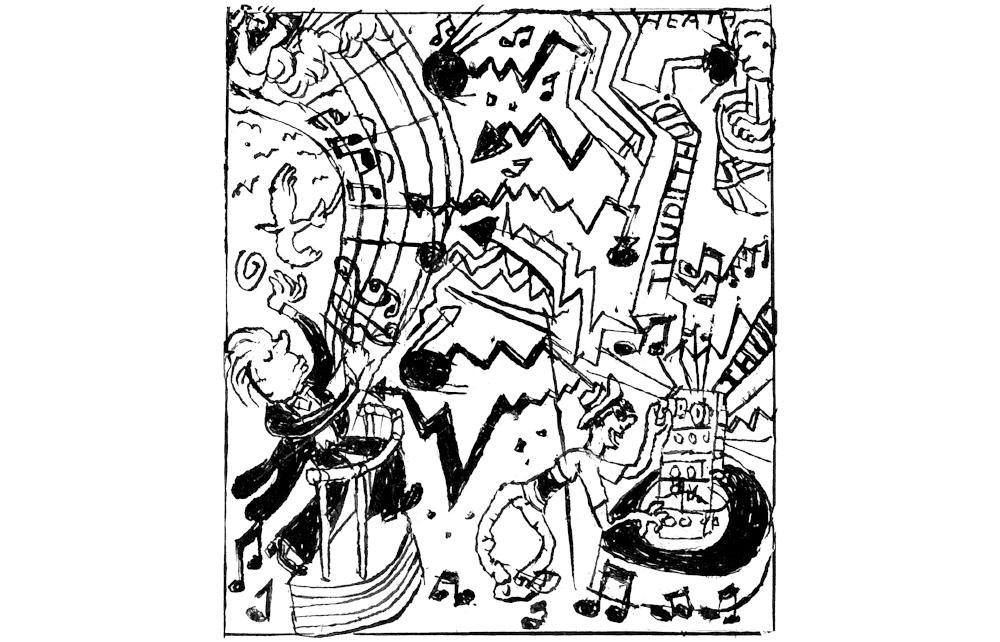Summer study courses for young composers have been popular for a few generations. After the second world war, up-and-coming experimental composers started flocking to places like Darmstadt in Germany for the Internationale Ferienkursen für Neue Musik. Olivier Messiaen taught there in the late 1940s and 1950s, when among his students were Stockhausen and Boulez. Attending the 1980 course as an undergraduate, I benefitted from a lesson with Brian Ferneyhough and conversations with Wolfgang Rihm, who died last week and was described in one obituary as ‘the last great German composer’.
In the US, the summer activities at places such as Tanglewood and Aspen have become part of the learning process for many young composers over the years. In the UK, the composer-led festivals of Aldeburgh and St Magnus (in Orkney) have been magnets for new generations of fledgling composers, attracted by the opportunity of being around the likes of Benjamin Britten and Peter Maxwell Davies in the past, and a range of more recent mentors including Oliver Knussen, Mark-Anthony Turnage and Thomas Adès.
It is in the wake of all this that my own little festival, the Cumnock Tryst, held in East Ayrshire, has established its own initiative for young composers. In this our tenth year, the festival begins at Dumfries House on Sunday 4 August and culminates in a performance of the music composed there on Saturday 10 August. I will be joined by the incredible Icelandic composer Anna Thorvaldsdottir.
The teaching of composition is a mysterious thing. No one is really sure how it is done and what is being done in the process. But young composers have, for centuries, been keen to learn from their elders. So what is it they are looking for in these encounters?
The possibility of absorbing something vital from a more seasoned composer is certainly a draw. But what about the questions of individual language, specific techniques and the sometimes conflicting issues of musical aesthetics? It goes without saying that the younger composer is usually someone who has written less than their mentors. Their relative youth means that their language and style have not had time to evolve much in the few years that they have been writing music.
I could predict with some confidence that the music of our eight young composers in Cumnock is likely to be significantly different in the decades ahead than the music that will be written and heard this week. That has certainly been the case with me.
The teaching of composition
is a mysterious thing. No one is really sure how it is done
One’s thinking towards the issues of composition usually changes over the decades, sometimes unconsciously. The kind of music I was writing in my twenties sounds different to the music I am writing today. And the curious thing is that I didn’t notice the changes happening. But looking back through the years I can see that the kind of music I tried to create then and the kind of composers I tried to emulate were different from my approach today.
The world of contemporary music has changed. What might have seemed vitally important to me in the 1970s and 1980s doesn’t hold the same fascination. The discussions around me are just as interesting, although I don’t feel as directly involved any more.
There have always been debates about style and direction in music. There have always been tensions, sometimes between the generations, about what kind of contemporary music society needs. In the 20th century, arguments revolved around specific points – tonality and atonality, romanticism and post-romanticism, modernism and postmodernism, radicalism and nostalgia, the role of minimalism, the impact of popular or vernacular styles on the evolving ‘art music’ of the day, the influence from distant cultures, serialism, spectralism, harmony, the revolutionary and the reactionary.
How, then, does a composer handle the array of extraneous influences that can sometimes impinge on what is described as ‘the most abstract of the arts’? There is a pride among musicians about the self-sufficiency of our art – that at a fundamental level music doesn’t need anything extra – that it’s all about the notes, and how those notes are moved around the page. Yes, there are times when music can form natural and exciting collaborations with other arts, such as theatre, literature and film, but at a fundamental level music can hold its own; it is complete in itself and can communicate its power beyond mere word and image. Music exists for itself.
That is what will grip the imaginations, the discussions and the lessons in the Cumnock Tryst course, as eight young composers this week create their new works for chamber ensemble.







Comments